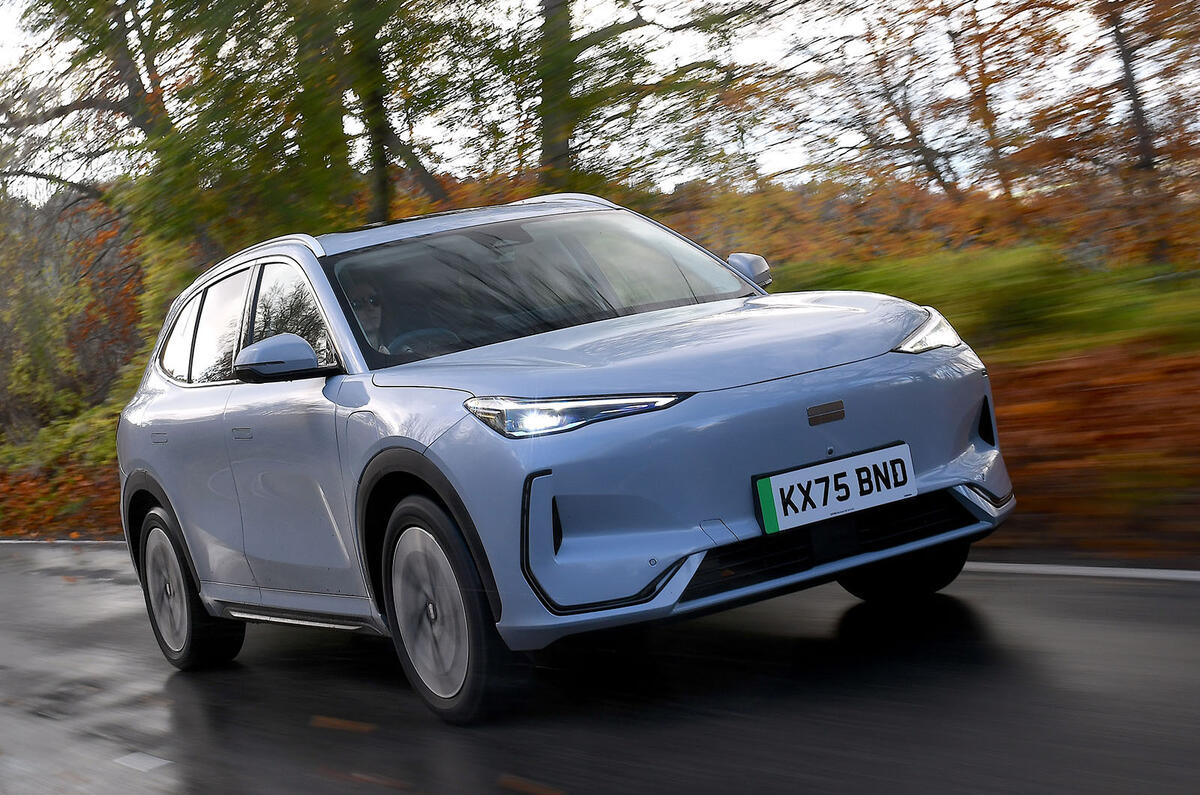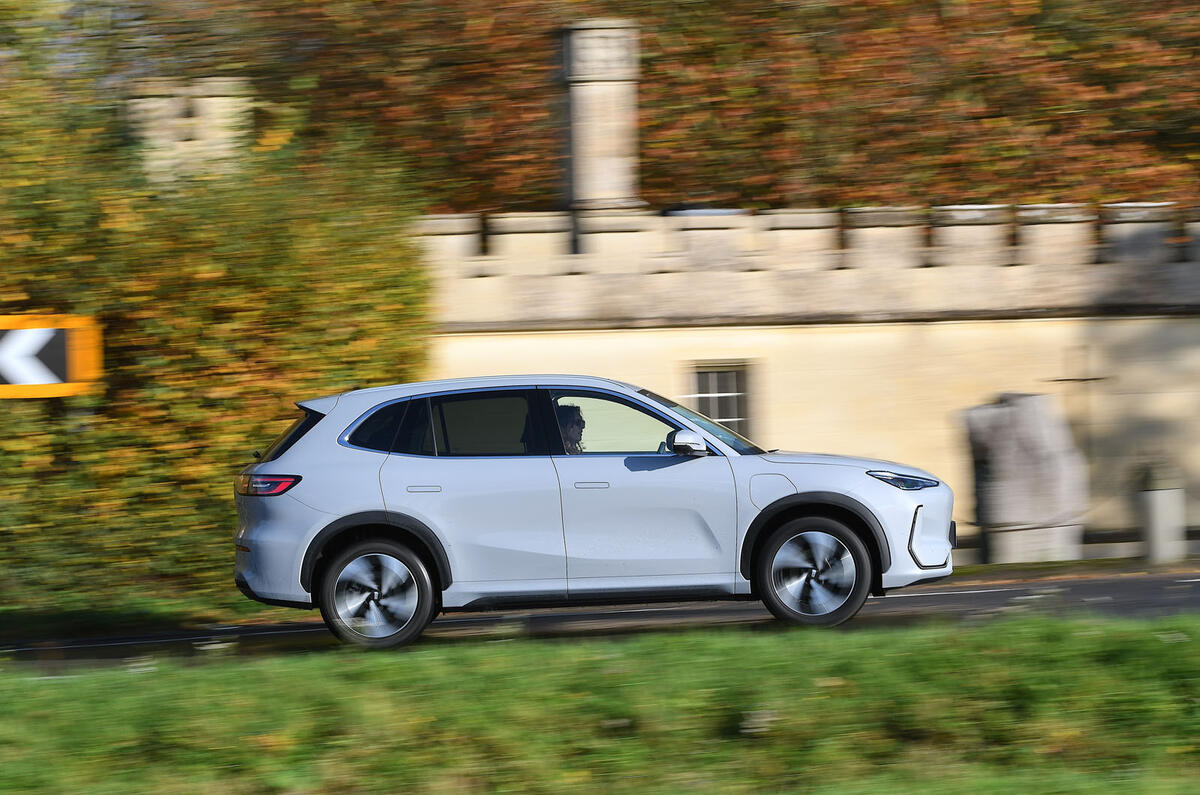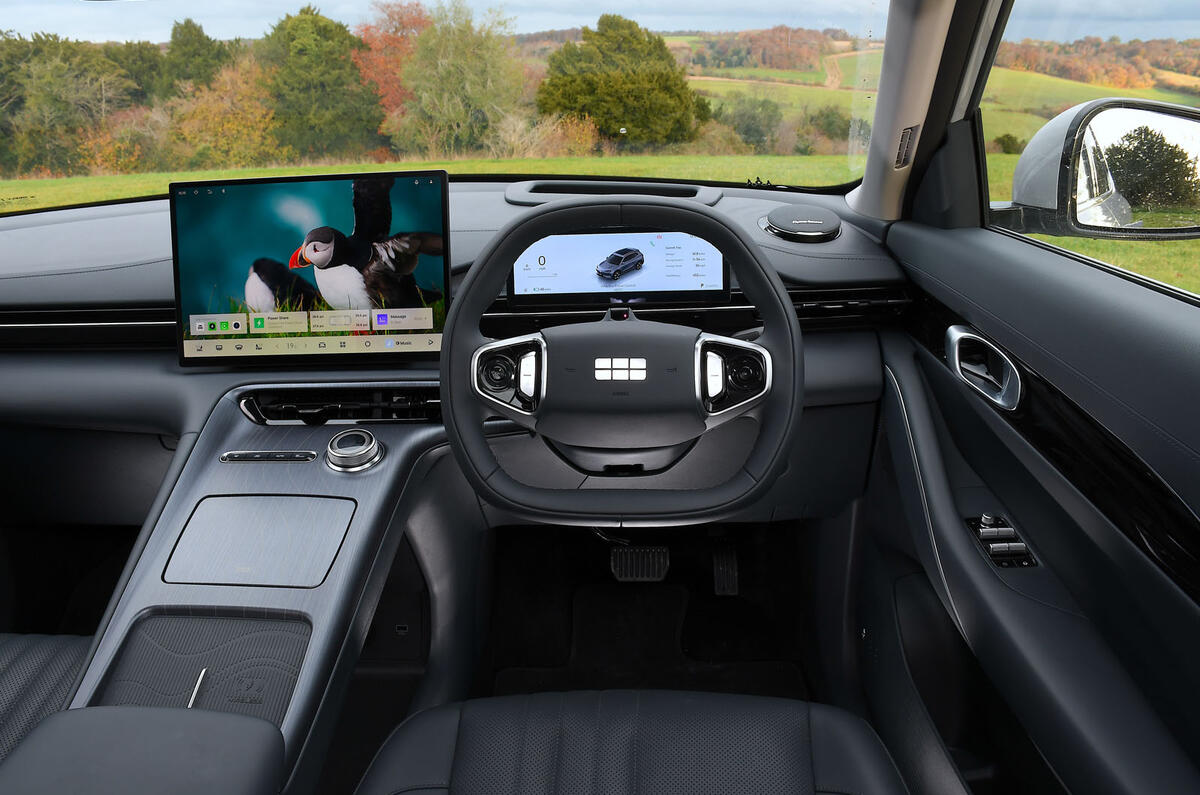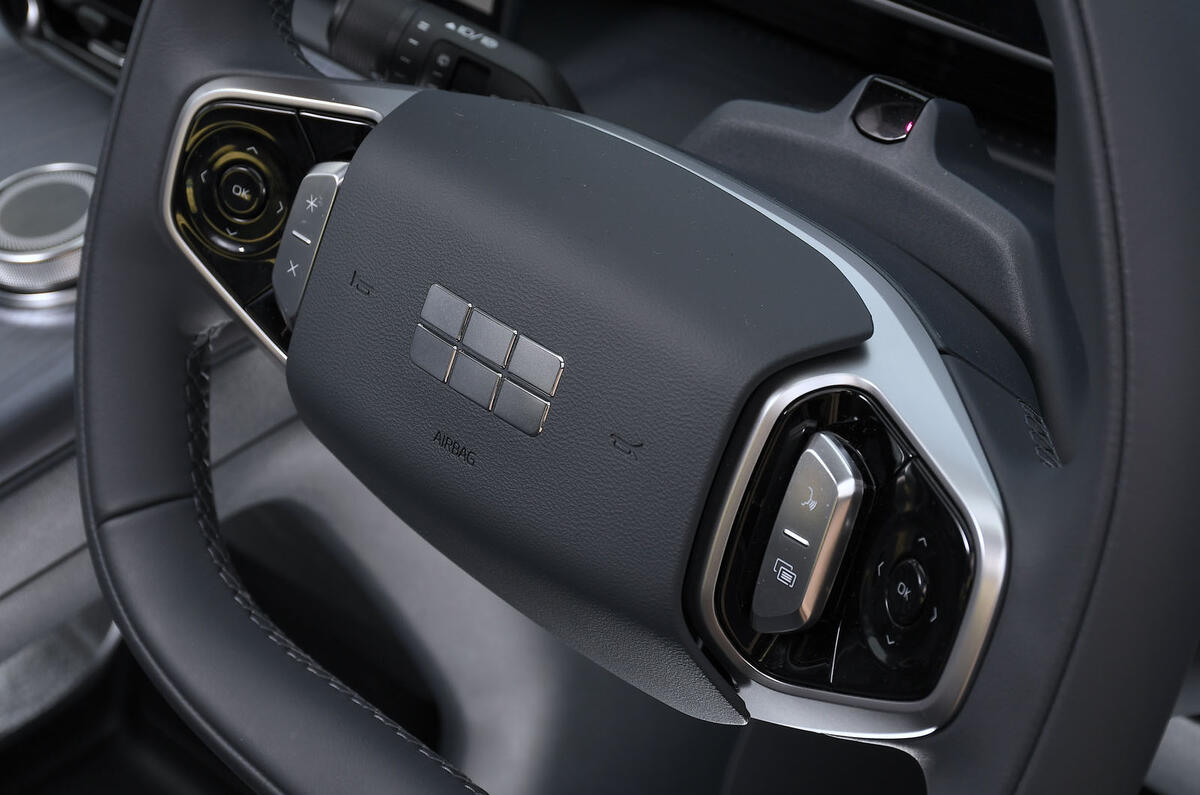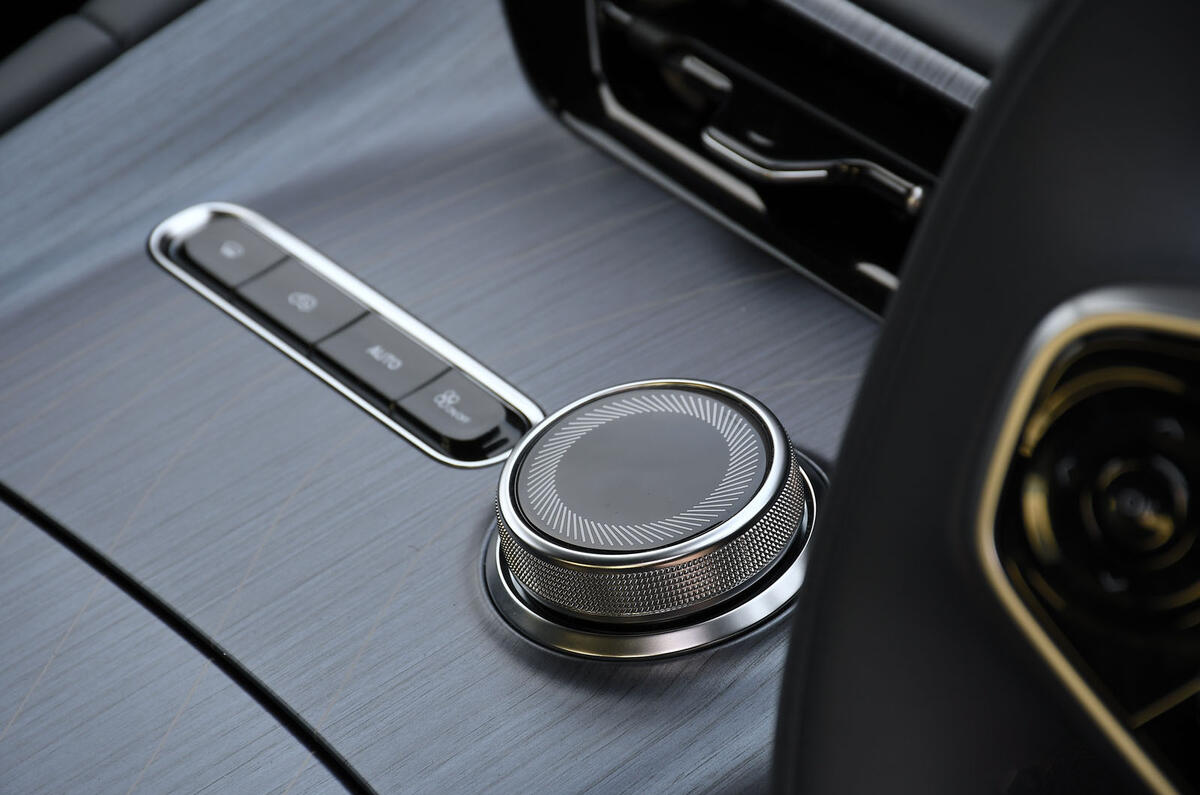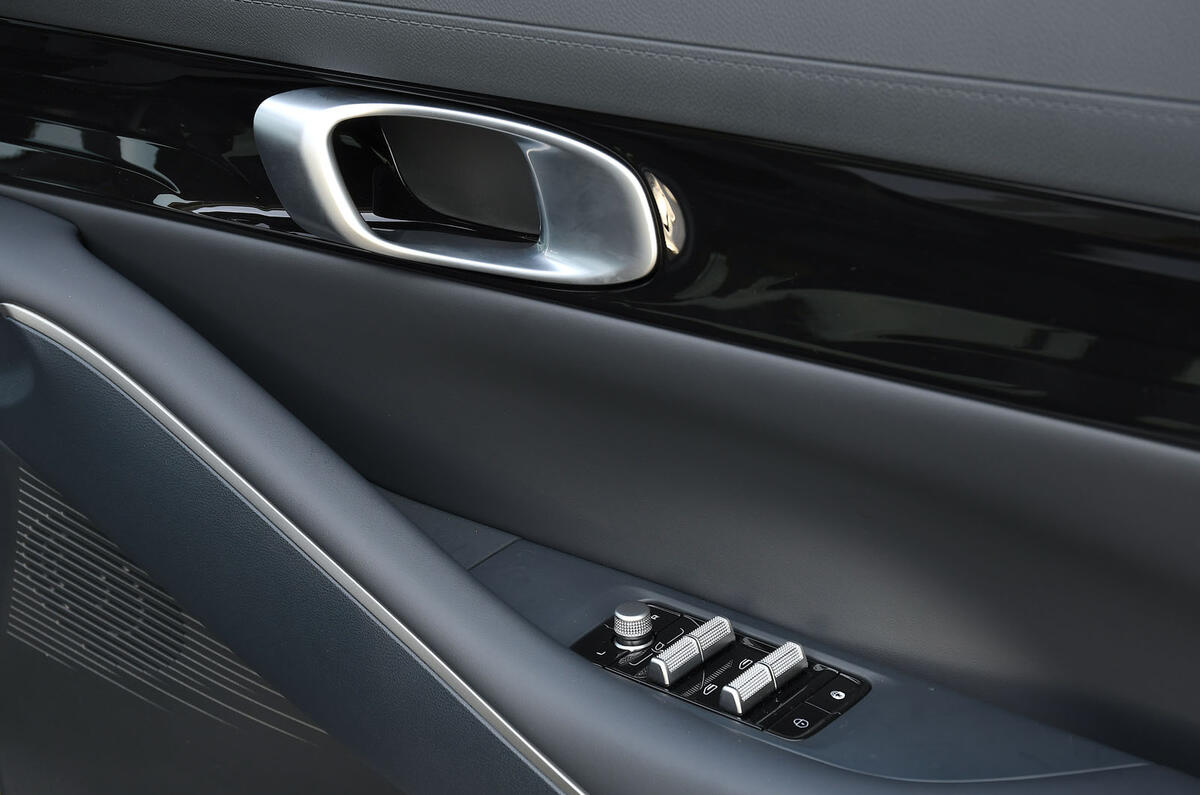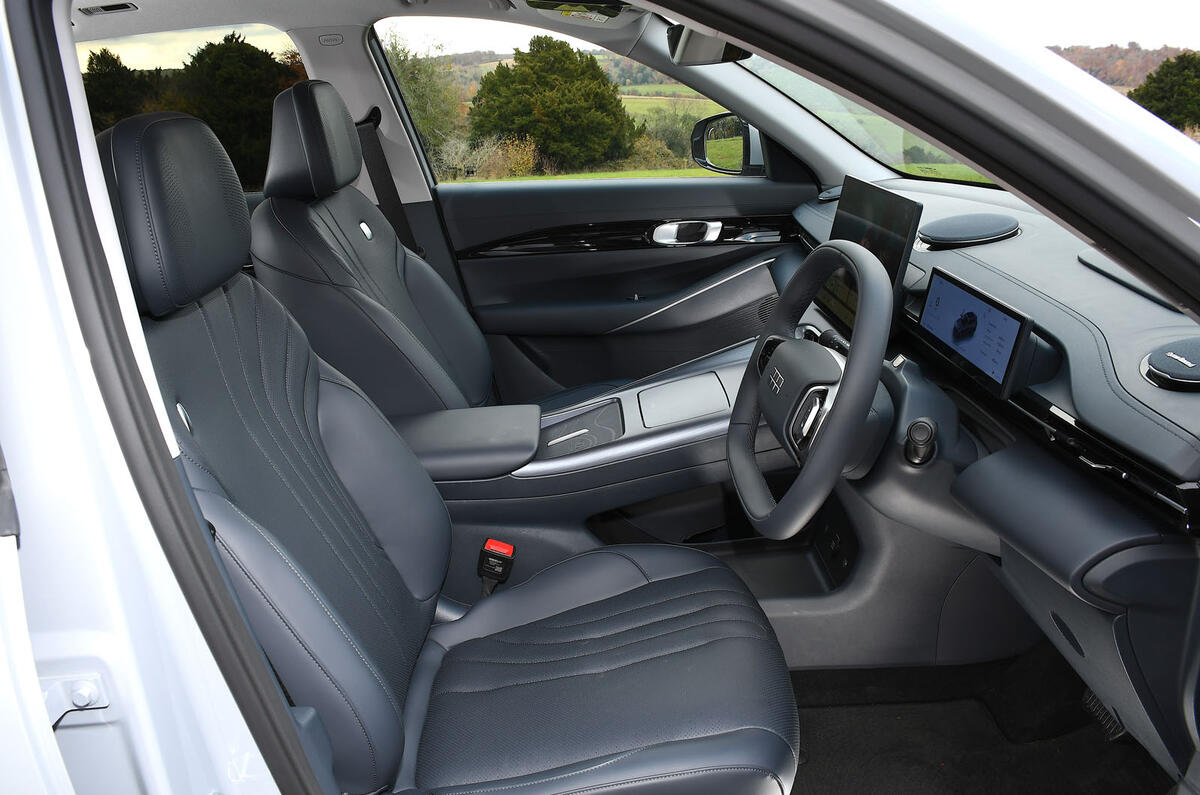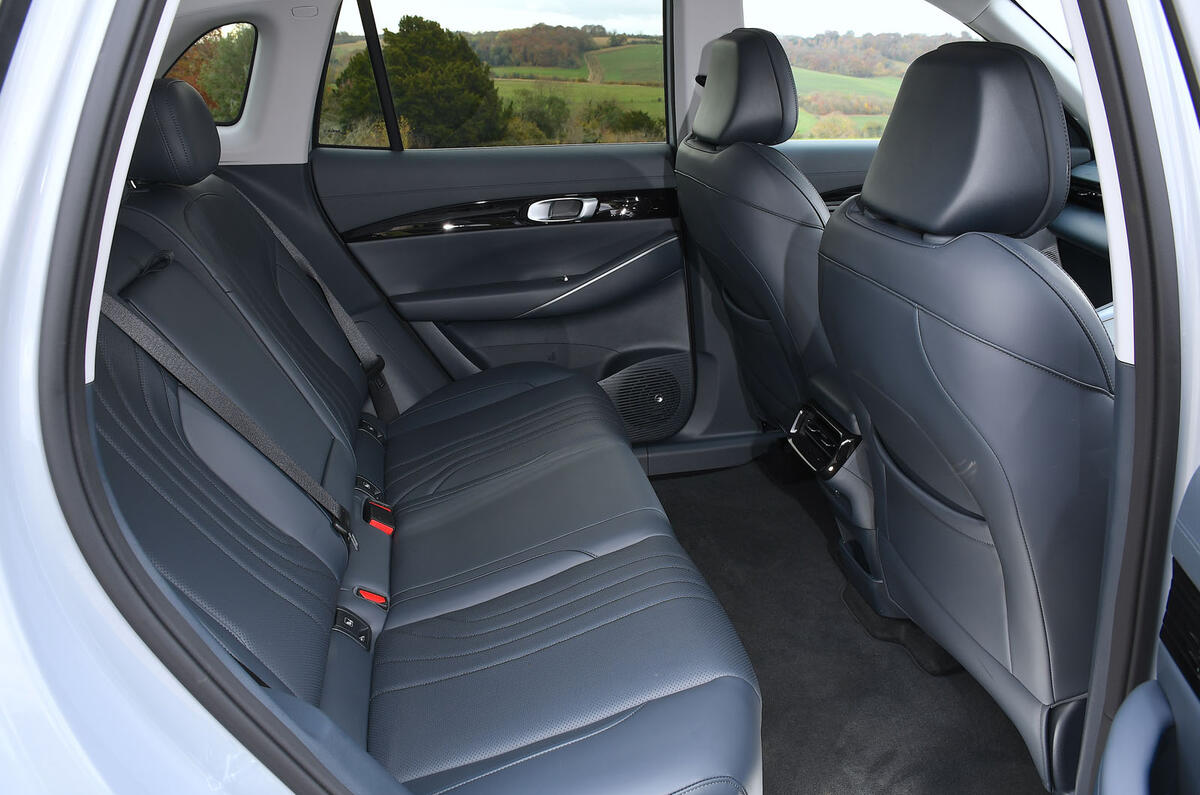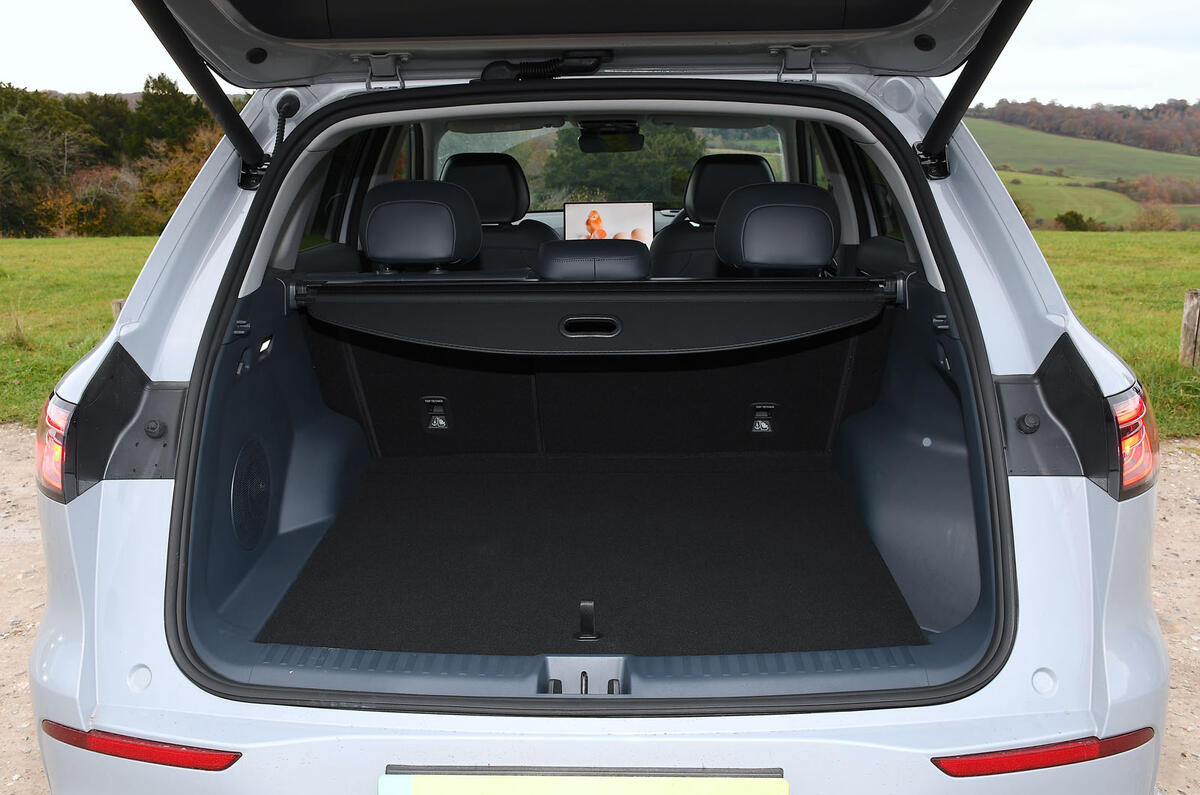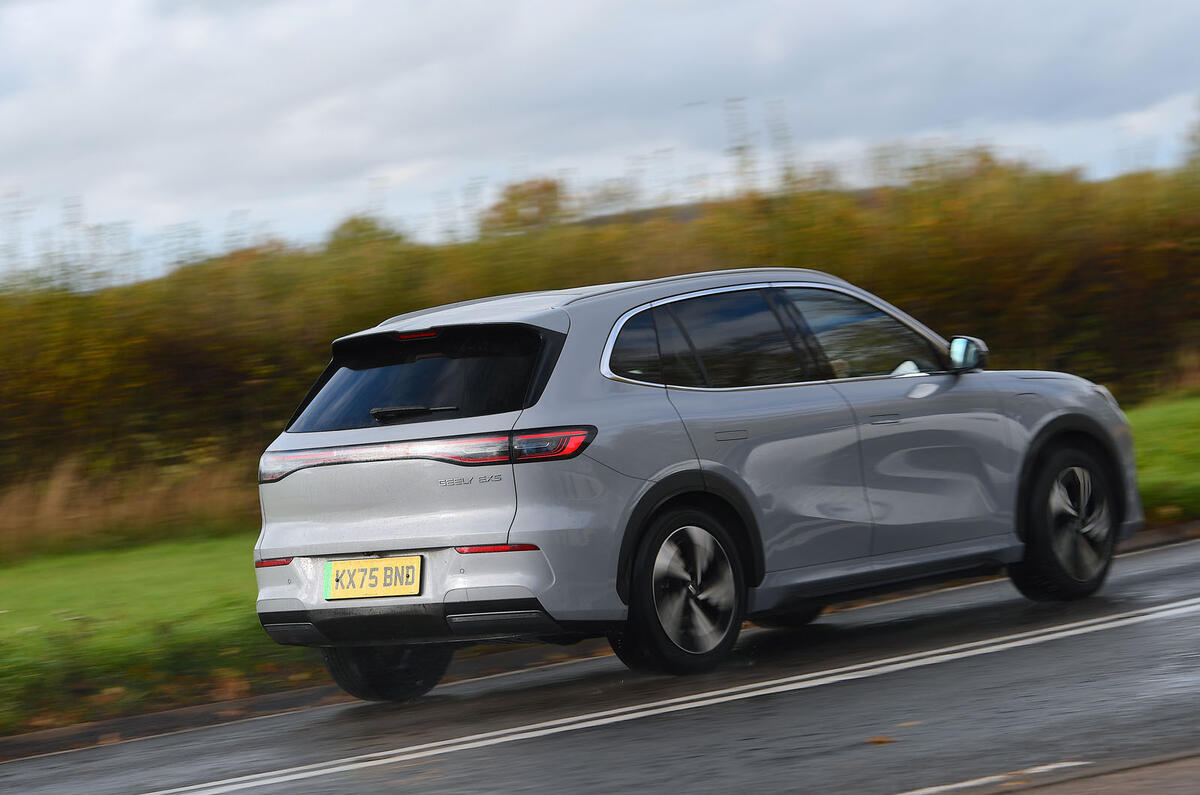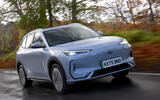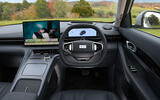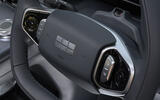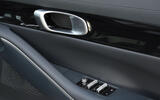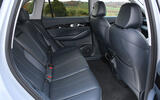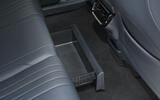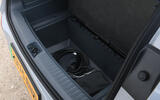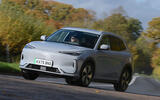With its vaguely octagonal steering wheel, flowing door cards and rising, asymmetric centre console, the EX5 holds a little more visual interest inside than the average new Chinese car, but not very much. On most trim levels, there is a choice between cream-coloured upholstery and the very dark blue of our test car.
In terms of their visual and tactile qualities, at least, the materials also seem at or above the class average. The centre console is topped with a fairly attractive matt line-pattern plastic and many other surfaces are soft to the touch. The door handles look straight out of a modern Honda and feel substantial enough. Like BYD, however, Geely makes liberal use of faux leather, which gives off a pervasive and deeply unpleasant vinyl smell.
Typically for a Chinese car, the EX5 is not short of equipment. Wireless charging, keyless entry and heating for the front seats and steering wheel are all standard and Max trim adds a panoramic sunroof that actually opens, a 16-speaker, 1000W sound system, ventilated massage seats and a head-up display.
Occupants are well catered for when it comes to storage, with fairly roomy door bins and cupholders, and a big space under the centre console. A drawer under the rear seats lets you hide even more stuff.
Seat comfort, however, isn’t so good. The EX5’s promotional materials boast of first-class comfort thanks to seats with 5+1-layer cushions and massage function. However, the seats are set far too high, lack cushion tilt adjustment and are overly soft and unsupportive, giving some testers backache on longer drives.
Arguably, the place to be is the second row, which has generous head room, adjustable backrest angle and an unusually good seating position for an EV, with a floor that doesn’t seem excessively raised. The benefit of those high-set front seats is that rear passengers have space to slot their feet beneath them. Boot space is slightly behind the rest of the class, at 410 litres (Kia EV3: 460 litres, MG S5: 453 litres), but it does offer a further 51 litres in a deep well under the floor.
Infotainment and multimedia
The EX5’s interior would be functional and well appointed if it wasn’t for the misconceived user interface and multimedia. It is quite typical in encompassing a large central touchscreen and a smaller driver display and it scores some points for offering a head-up display on the top trim. The controls for the mirrors are mercifully conventional.
However, physical controls are otherwise few. The buttons on the steering wheel are mostly unmarked, which is needlessly confusing. There’s a supposedly customisable button, but you can’t map any useful functions to it, and while the big rotary controller bodes well, it operates only a few functions (such as the media volume and the cabin temperature) and switching between them is unintuitive.
Then we get to the central touchscreen, which is very similar to what we have seen in BYDs and the Mazda 6e. Even though the display is enormous, the home screen doesn’t do anything useful like display a map or media controls. Instead, it lets you decide whether you would rather look at some puffins, a guinea pig or a cityscape. We would argue that you should be looking at the road instead.
Although some (but not all) of the climate controls are permanently accessible in a toolbar at the bottom, you have to hit the ‘buttons’ in precisely the right spot for them to work. In practice, dialling down the heated seats requires several presses. You can resort to the voice control, which works okay, but you shouldn’t have to. The built-in navigation isn’t particularly clear or very aware of traffic.
Generally, when you dive into the menus, information and buttons are thrown at you in a small font and with little sense of hierarchy. The saving grace is that there’s wireless Apple CarPlay and Android Auto.




